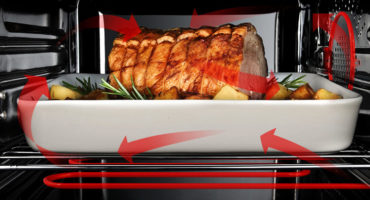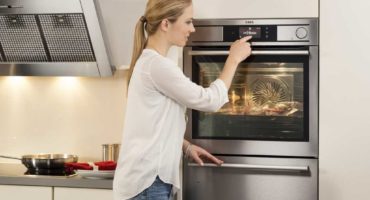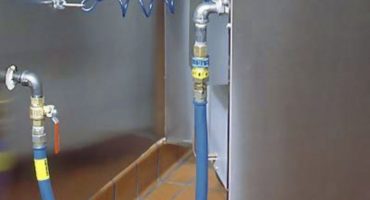The process of cleaning ovens takes a lot of time, because due to high temperatures there is no way to remove grease and dirt immediately after they appear on the walls, bottom or inspection window of the oven. Significantly simplify the care of the oven can be done using the hydrolysis cleaning method. This procedure can be carried out at home, and after its implementation to get rid of pollution will be much easier.
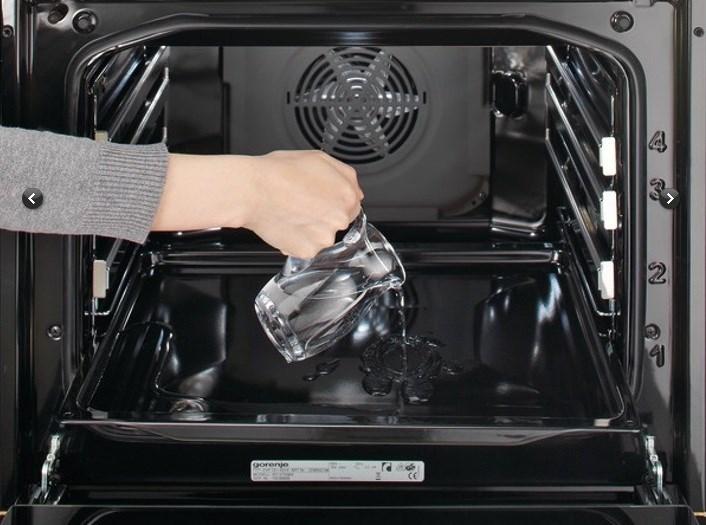
Hydrolysis
Hydrolysis cleaning of the oven and oven - what is it?
The method of hydrolysis removal of solid particles involves the removal of contaminants using steam. That is why this method was called hydrolysis, because when interacting with water, and more precisely with steam, the substances also tend to break down. When combined with cleaning agents, they create emulsified substances that can be removed from the surface with a damp sponge. The process of the procedure is as follows:
- A tray of water is installed inside the cabinet.
- The oven warms up to 90 °.
- Heated water separates steam, which combines with grease and impurities. They run down to the bottom.
- Softened fats are washed manually with napkins after all internal surfaces have cooled.
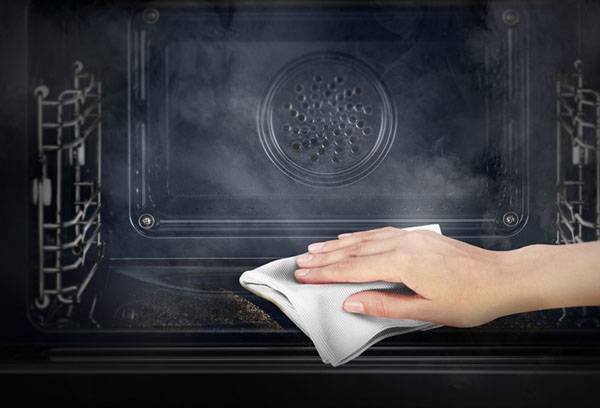
Removing fat with a tissue
Modern ovens are finished with enamel inside, which prevents the accumulation of fat. This greatly simplifies the process of hydrolysis cleaning.
How to carry out hydrolysis cleaning
To maintain the cooker in good condition, it is recommended to carry out hydrolysis washing after each cooking. In this case, it will be possible to avoid the accumulation of hardened fat, the removal process of which takes a lot of time.
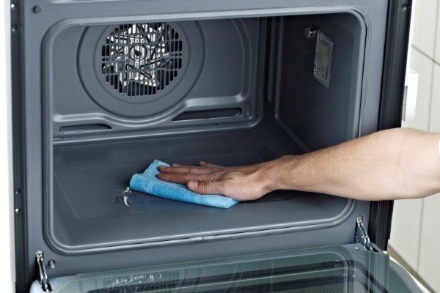
Clean oven
The phased process of hydrolysis purification looks like this:
- Remove all contents from the oven, including baking sheets.
- If the stove is electric, most likely it has a recess at the bottom designed for hydrolysis. If the stove is old, and there is no such depression, you can use any wide capacity that is installed on the bottom of the grill. Pour water into which the detergent is added. Such can be special gels for hydrolysis, as well as homemade auxiliaries (salt, vinegar, and others).
- After that, it is necessary to turn on the cleaning function or set the heating in the oven to a temperature of 90 degrees. Having warmed up to this temperature, water passes from a liquid state to a vapor state. Hot steam softens the dirt that has accumulated on the walls and bottom.
- Heating is carried out for 20-30 minutes.
- After heating is completed, it is necessary to treat the inner walls and the bottom with napkins that can easily remove softened dirt.
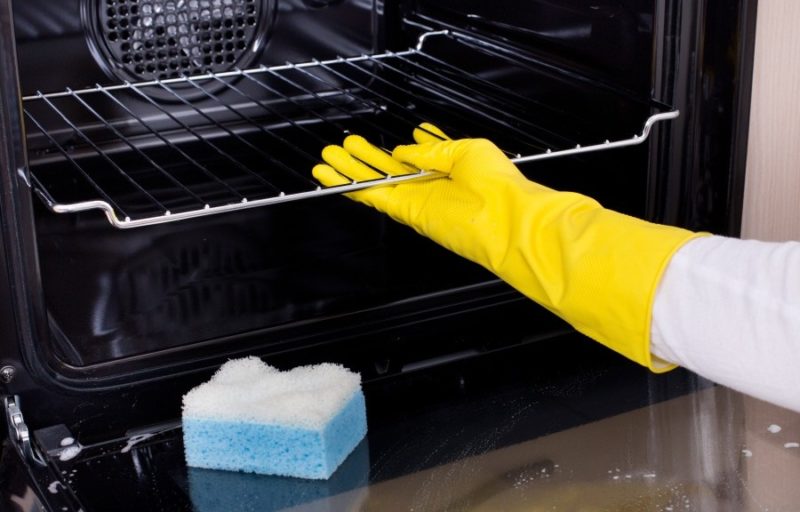
Oven after hydrolysis
In the absence of special detergents or cleaners for such cleaning, you can use vinegar, lemon, laundry soap or salt. Vinegar should be added to water in a ratio of 1: 4 and this solution should be operated at a temperature of 90 degrees.
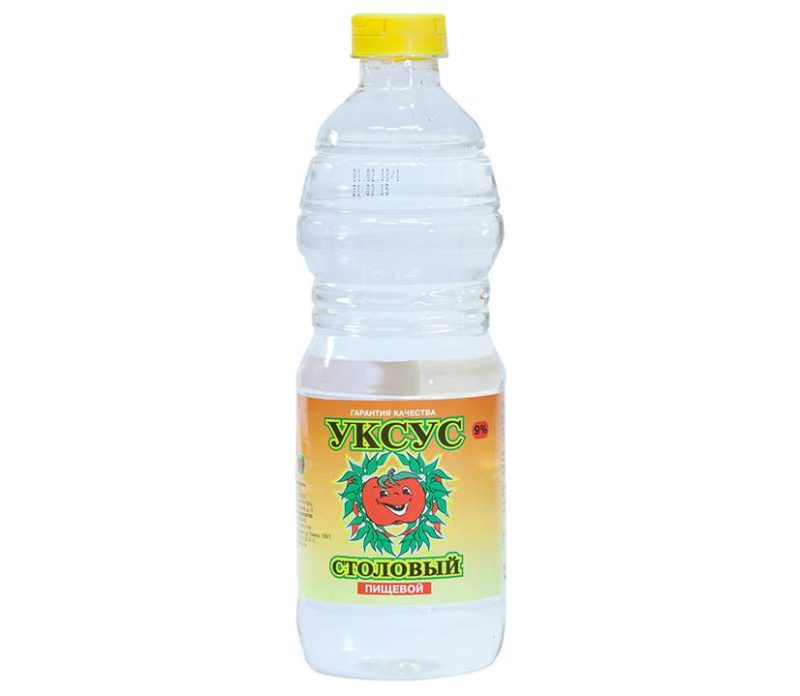
Hydrolysis Vinegar
When using lemon, place a few sliced slices in a baking sheet with water. In addition to lemon, it is advisable to add a small amount of ordinary dishwashing gel (1-2 tablespoons) to the water.In this case, the cleaning should be carried out for 30 minutes, and the oven should be heated to a temperature of 150 degrees.
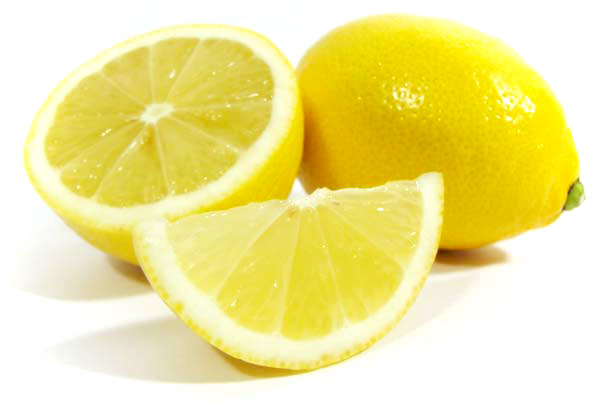
Hydrolysis lemon
When using household soap, about a third of the bar must be grated and dissolved in warm water (the amount is indicated per 1 liter of water). When using laundry soap, the oven heats up to 150 degrees, and after removing all grease and dirt, the door should be left open for 8-10 hours so that the smell of soap disappears. After cleaning with laundry soap, it is advisable not to use the oven during the day.
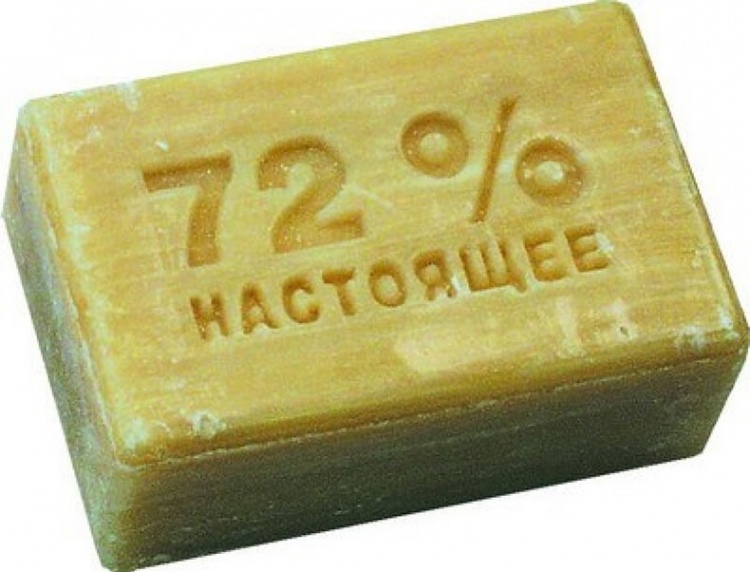
Hydrolysis soap
When using salt per 400 grams of water, 300 grams of salt is used. It is first necessary to dissolve the salt and pour the saline solution into the pan. It can be filtered in advance. In addition, the oven should be heated to a temperature of 200 degrees and cleaned for 30 minutes, and remove dirt after some cooling.
Advantages and disadvantages of the hydrolysis purification method
Like any purification method, hydrolysis has several advantages and disadvantages. The advantages of using this method of cleaning the oven of the stove include:
- low cost of the procedure. The cleaning agent for the procedure is used in a very small amount, moreover, it is inexpensive. The consumption of electricity or gas during the procedure is also minimal, since low temperatures are used;
- the possibility of using this algorithm for both gas stoves and electric ones;
- keeping enamel intact. When cleaning with a hard metal brush or sponge, enamel is damaged; when steam is removed, it remains intact;
- safety of this procedure due to the use of low temperatures and their short exposure time;
- the ability to use this method for ovens of the old and even Soviet production;
- the ability to carry out such cleaning after each cooking without harm to the internal coating.

Fat removal
As can be seen from the above list, the hydrolysis purification method has a large number of positive aspects. However, this method has several disadvantages. These include:
- the need for manual removal of contaminants after the dissolution of fat by steam;
- the inability to eliminate old dirt, hardened fat;
- the need to free the oven from contents before each procedure;
- the possibility of burns if, after hydrolysis, the inner walls are not completely cooled;
- the impossibility of cleansing by hydrolysis of lattices and baking sheets;
- the need to carry out the procedure after each cooking.

Purified Oven
Thus, it is clear that hydrolytic cleaning is a fairly budgetary and simple way to keep the oven clean. Nevertheless, this method cannot be considered as an opportunity to once and for all remove long-accumulated contaminants, since hydrolysis is a gentle cleaning method that is suitable for continuous use and copes with fresh fat.
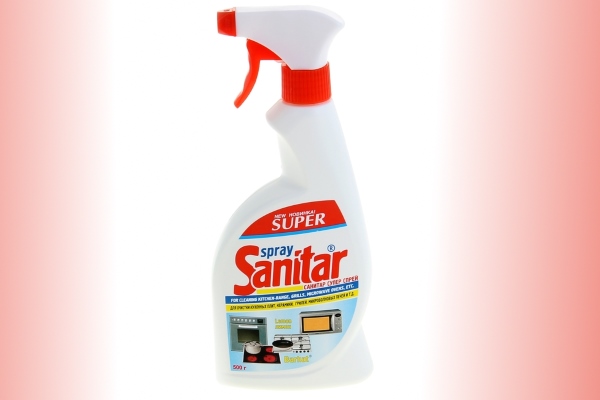
Cleaning spray
Conduct hydrolysis cleaning the wind A cabinet cupboard can be used regularly after each cooking. However, for several reasons, this method of cleaning the inner surface of the oven cannot be called universal, although it is suitable for stoves of any production. The main feature of hydrolysis is that it removes grease and dirt very carefully and gently, and although this helps to preserve the appearance of the plate, it is impossible to remove stale dirt by hydrolysis. However, if you carry out such a cleaning after each use of the oven, the need to remove old hard fat will disappear, and by hydrolysis it will be possible to keep the oven in perfectly clean form.

